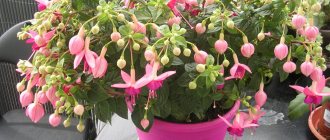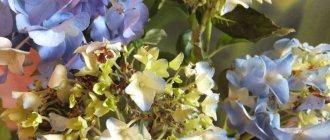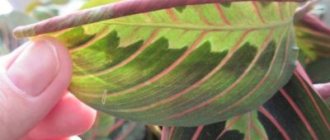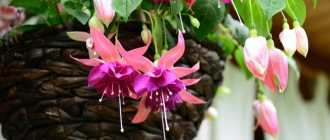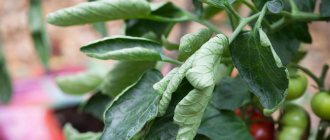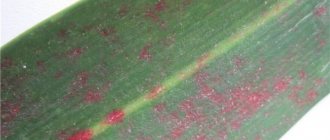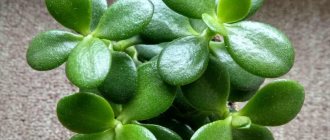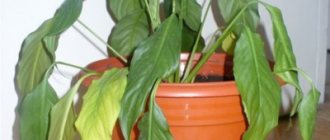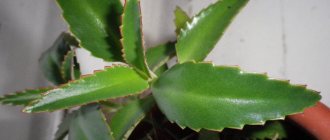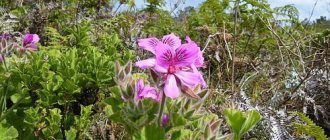Kalanchoe is a relatively unpretentious plant. It feels great at home. This flower is often used for medicinal purposes. Today we will talk about why Kalanchoe leaves curl and how to deal with it.
It is difficult to answer unequivocally the question why the leaves of your medicinal plant curl. There are several reasons for this phenomenon, but all of them can be easily eliminated. First of all, you need to carefully examine the soil where the Kalanchoe is. If there is too much nitrogen in the soil, then most likely this fact contributed to the curling of the leaves.
Lack of moisture is another likely cause. Not only the soil, but also the leaves should be moistened. It is advisable to maintain normal humidity in the room where the flower is located.
But the most common factor why Kalanchoe leaves curl is the presence of harmful insects. Aphids cause enormous damage to flowers. It sucks the juice from the leaf, causing the death of the plant. At first the leaves curl and then fall off. It is noteworthy that aphids most often appear in spring, when Kalanchoe begins to bloom.
How to save a flower
Once you have found out the reason that the Kalanchoe leaves are curling, you should take measures to save it. Of course, if irreversible processes have not begun. If the twisting occurs because you overdid it, then the plant should be carefully removed from the pot and the roots inspected.
All rotten areas should be removed, and a healthy root should be treated with a weak solution of potassium permanganate or potassium permanganate. Treat the areas where the cut was made with charcoal. After all these simple procedures, place the plant in a pot, replacing the soil with fresh one. Now don’t repeat your previous mistakes and don’t be too zealous with watering. If the leaves noticeably change color and the reason is bright lighting, then move the plant to a more shaded place and spray it with a spray bottle. A few days are enough for the plant to recover. If this does not happen, then, alas, irreparable damage has been caused to the plant, and despite treatment it is not possible to save it. We have already found out that insects cause great harm to Kalanchoe, which leads to the fact that the leaves begin to curl. If you find areas on the plant damaged by aphids, immediately cut them off and burn them. The remaining plant must be treated with an insecticide for indoor plants. It should be processed once a week for 30 days. Another first aid technique is to wash the flower with a solution of green potassium soap or you can use laundry soap. A nuance: during processing, to prevent the product from getting on the ground, it is wrapped in polyethylene.
Scale insects also cause damage to the plant. The condition of Kalanchoe worsens because sooty fungus multiplies in the sticky secretion secreted by the scale insect. To save the plant from troubles, you need to collect harmful insects from the leaves and wash the plant with soapy water. You can make it easier to remove insects by pre-treating the plant with alcohol. Since there are no separate preparations to combat scale insects, you can treat Kalanchoe with any insecticide for house plants.
Keep the plants clean, remove fallen leaves, and you will not give unnecessary reasons for pests to appear.
Another preventive measure is compliance with the light regime and watering schedule. Inspect the flower regularly for pests. If detected, immediately begin to fight them. Remove the insects and spray the Kalanchoe with a fungicide or insecticide.
Kalanchoe is a favorite indoor plant of gardeners around the world. After all, a flower can delight its owners with beautiful decorative blooms almost all year round. Another advantage of this culture is that it reproduces quite easily and does not require special manipulations when planting. However, despite all the unpretentiousness, without proper care, getting an attractive specimen will not be so easy. In addition, improper care can lead to more serious problems.
The most pressing question that appears quite often on various gardening forums is why do Kalanchoe leaves turn yellow? There may be several reasons for this phenomenon. Let's take a closer look at the main options.
The appearance of completely yellow or dry leaves on Kalanchoe, as well as curling of the tips of the leaf blade, may indicate the onset of the development of a disease or the proliferation of pests. However, sometimes the source of trouble lies in improper care of the plant. It is quite possible to determine what “misfortune” befell a particular representative of the flora at home. To do this, you need to understand what the possible reasons for such phenomena may be. First of all, experts associate yellowing of foliage with the following factors:
- non-compliance with planting technology;
- improperly selected soil;
- incorrect choice of location;
- failure to maintain proper temperature conditions;
- improper organization of watering;
- insufficient or excessive amounts of minerals and trace elements.
Of course, you should definitely consider the possibility of the appearance of various pests, as well as the fact that leaves may turn yellow and fall off for natural reasons, that is, when their life cycle comes to an end. If the root of the problem is improper care, then in order to avoid such troubles, you should figure out how to correctly perform each of the indicated points.
Pests of Kalanchoe
Pests also pose a danger to the plant. In addition to the fact that insects cause significant damage to the leaves, stems and inflorescences of Kalanchoe, they also become carriers of viral, fungal and bacterial diseases.
Mealybug
The mealybug feeds on the sap of the plant. This insect “eats” Kalanchoe and is a carrier of the fungus “black mold”. If the parasite is not dealt with, the flower will die. The first sign of appearance is a white waxy coating on the veins. Insecticides are used for treatment. Affected leaves should be removed.
This is interesting: What is the difference between Geranium and Pelargonium?
Shchitovka
Scale insects most often attack the inside of leaves or the stem. It is a fairly large brown beetle. When attacked by parasites, the leaves of the crop quickly dry out.
To cope with insects, they need to be collected manually. To do this, you can use a cotton pad or napkins. After removing the parasites, the foliage should be wiped with an alcohol solution and treated with an insecticidal preparation.
Ticks
Spider mites can appear on any plant. Kalanchoe is no exception. The presence of the parasite can be judged by the appearance of white dots and thin cobwebs on leaf blades and stems. They appear on plants in dry air. With severe damage, the entire Kalanchoe can be entwined in a web with pests inhabiting it.
The fight against ticks includes several stages:
- Isolate any suspicious plants.
- Wash the Kalanchoe thoroughly with warm water and laundry soap.
- If there are few ticks, use this method: water the flower generously and cover it with a bag; the created greenhouse effect will kill the pests.
- Acaricides and insectoacaricides will help you most quickly and effectively defeat ticks. The drugs are used in several stages - to destroy eggs and the most persistent individuals of the parasite.
Aphid
One of the most dangerous pests of indoor plants. Aphid parasitism can be determined by the following signs:
- a large number of small green or transparent insects appear at the base of the stem and leaves;
- traces of aphid activity remain on the surface of the leaves - a yellowish sticky coating;
- insects “gnaw out” the leaves and trunk of the plant, leaving through holes on its surface.
The destruction of aphids must be started immediately. If the insects multiply, the affected flower will have to be thrown away. In the early stages of pest development, it is recommended to spray the plant with a soap solution (100 grams of laundry soap shavings per 1 liter of water). Decoctions of “fragrant” herbs are effective against aphids - tansy, garlic, calendula, mint, onion peel. The plant is sprayed with prepared formulations several times a day.
In case of severe damage, insecticidal agents are used - Tanrek, Iskra, Aktara, boric acid.
Planting and replanting Kalanchoe
A new specimen of a flower culture can appear in our homes through purchase in specialized stores or in the case of donation of a small shoot. In principle, it does not matter at all how the Kalanchoe was acquired; perhaps it is simply time to replant the long-growing flower; it is only important to plant it correctly. The favorable period for planting is, of course, spring. First of all, you need to prepare the soil mixture and container for placing the plant. The pot should not be too spacious, or you can place several layers at once in one container. As for the filling, the soil for Kalanchoe should be loose; you can prepare the following composition: mix humus, sand, leaf and turf soil in equal parts. You can also find ready-made mixtures designed specifically for succulents. The plant should be handled carefully, as it has rather fragile leaves and stems. A drainage layer is placed at the bottom of the pot, and soil is poured on top to approximately half the volume. Next, the shoot is placed and the remaining soil is added. The pot should be shaken a little to fill the voids and pour plenty of water at room temperature. If the soil has settled significantly, then it is necessary to make another addition.
When buying a flower in a store, you should definitely replant it as soon as possible. After all, on display, plants are in pots filled with transport soil, which contains no nutrients and only flowering stimulants. If you keep the plant in such soil for a long time, this can lead to its death.
Prevention
It is easier to prevent any disease than to treat it. Therefore, in order to prevent Kalanchoe leaves from curling, you need to follow care recommendations and take preventative measures to control pests. First of all, you need to rid the plant of drafts, sudden temperature fluctuations, and frequent changes of place of residence. Watering should be done only with settled and not very cold water. Do not overdry the flower and allow the plant to receive excess heat, which will lead to weakening.
Keep the plants clean, remove fallen leaves, and you will not give unnecessary reasons for pests to appear.
Another preventive measure is compliance with the light regime and watering schedule. Inspect the flower regularly for pests. If detected, immediately begin to fight them. Remove the insects and spray the Kalanchoe with a fungicide or insecticide.
Home care
The transplanted flower should be placed in a bright and warm place, because Kalanchoe is a light-loving crop. The ideal location is a southwest or southeast window. On the south side or when exposed to direct sunlight, the tips of the leaves may begin to turn yellow. As for the temperature, it should be no higher than 30 and no lower than 20 degrees from spring to autumn, and in winter it is advisable to give the flower a rest, lowering the temperature to an average of 15 degrees.
Kalanchoe is a plant that prefers 10 hours of daylight. This allows you to achieve abundant flowering and full development of the flower culture. That is why in summer the day should be artificially shortened, and in winter, on the contrary, it should be slightly extended by illuminating the plant.
The next point is watering the Kalanchoe. Yellowing of leaves can occur either with insufficient water or with too much water. The specific cause can be determined by external examination. If the leaves have darkened and curled, then the volume of moisture should be increased, but if the leaves are pale yellow and soft, then the amount of water should be reduced. Experts recommend watering the plant more abundantly in summer and moderately in winter. For this purpose, you should use only warm and settled water. If the room where the flower is located is hot, you can organize spraying on the leaf. However, this procedure should be carried out quite rarely, because with increased moisture the flower may begin to rot.
The cause of Kalanchoe leaf disease is often overwatering, in which case powdery mildew or low temperatures can develop, at which gray mold often appears. Also, the appearance of the flower can be spoiled due to a lack of minerals or their excess. Experts recommend feeding the plant 2 times a month during the growth period (that is, from spring to autumn). For this purpose, you can use a ready-made mixture, for example, for cacti.
Florists advise taking a closer look at the plant; sometimes by the condition of the leaves you can understand which elements are missing. In particular:
- browning of the edges of the leaves is caused by a lack of boron;
- slow plant development and small leaves indicate a lack of nitrogen;
- spots on the leaves and death of shoots are the cause of a lack of molybdenum;
- Yellowing, wrinkling, or dying of lower foliage indicates excess phosphorus.
To summarize, we can say that the appearance of a plant depends on how its contents will be organized. In general, caring for the Kalanchoe flower at home, the photo of which can be seen below, is not particularly difficult and is quite feasible even for novice gardeners.
The question of why Kalanchoe leaves turn yellow most often concerns those gardeners who do not yet have sufficient experience in growing this plant. Experienced gardeners are well aware of how to properly treat a flower. They know what care involves, how Kalanchoe is transplanted, what it needs, and similar information. Our article is designed specifically for a beginner in the field of floriculture.
As soon as you see that the plant begins to change appearance, and its leaves begin to change color or curl, this means that the flower is missing something or is suffering from improper care. In order to correctly orient the reader in this matter, we will first list the possible causes of the phenomenon when Kalanchoe leaves turn yellow and dry:
- the flower was transplanted in violation of technology;
- the soil in the pot where the flower was planted has the wrong consistency;
- the place where the Kalanchoe is located does not suit it;
- temperature requirements are not met;
- incorrect watering;
- incorrect feeding regime;
- pest attack.
These are the main reasons why Kalanchoe leaves turn yellow. Of course, there is an option that the leaves simply change naturally, but in this case this process is not widespread. Old leaves mostly turn yellow and fall off one by one. And in order to correctly respond to any of the reasons, you need to take a closer look at the information on how to properly care for the plant.
It is worth noting that this flower is not one that is too picky, and by talking about how to care for a homemade Kalanchoe, we will not reveal anything that the average person cannot do. This plant is native to Madagascar, and it has a huge number of varieties. They differ greatly in appearance, but the care requirements are mostly the same.
The first thing I want to talk about is watering. Considering the homeland of the flower, we must understand that it does not like waterlogging. It should be watered with settled water at room temperature. When watering, it is very important not to get on the leaves, but to direct the flow of water directly to the ground. It is necessary to water so that the soil absorbs the water and becomes moist, but so that there is no excess water left either in the pot or in the pan. In the case of Kalanchoe, the principle “it is better to underfill than overfill” applies. In summer and spring, the flower is watered more often, but in autumn and winter, watering should be reduced.
The next factor that is important is the degree of illumination. The fact is that Kalanchoe is a flower that needs to be “put to bed.” And it's not a joke. From morning until three in the afternoon, you need to keep the flower pot in a well-lit place, for example, on a windowsill on the south side. But after this time, it needs to be moved to the shade, to rest. If you cannot change the place, then simply cover the flower with a scarf. If you don't do this, the sun will damage the leaves.
We should also talk about what temperature conditions Kalanchoe, a decorative flower, requires. The ideal temperature for keeping it is considered to be about 18 degrees Celsius. But if it drops indoors, the plant will calmly tolerate it if it is no higher than six degrees. However, if the temperature, on the contrary, increases, then this can lead to problems, since the plant will begin to consume a lot of water, and this, in turn, will lead to rotting of the roots.
It is also important to monitor the air humidity in the room. It was already mentioned earlier that the flower does not like waterlogging, which means that the room must be maintained in a dry climate. This is especially true in the autumn and winter, when there is high humidity outside.
Improper feeding is another reason why Kalanchoe turns yellow. What to do in this case? To begin with, check which complex you are using and whether it is suitable for this plant. It is recommended to use succulent fertilizer and follow these simple tips:
- you need to feed the soil in early spring;
- the mixture must be diluted twice as weakly as indicated in the instructions;
- for proper absorption of the necessary elements, it is necessary to dissolve the mixture in water heated to a warm state, then let it cool, and only then water the flower;
- You cannot fertilize the plant during the winter dormant period.
Replanting Kalanchoe is also not difficult. There is nothing complicated in this process. The flower grows quite quickly, so it needs
replant frequently, otherwise it will begin to wither. It is better to perform this procedure in the spring. First you need to remove the plant from the pot - carefully, trying not to damage the root system. Together with the remains of the old soil, you need to place the flower in a new container. It is important to remember that the new pot should contain equal amounts of old and new soil, and the composition of the soil should be similar. This flower is suitable for use as soil for succulents. Also, you can make the desired mixture yourself by taking in equal proportions:
The bottom of the pot needs to be well drained. In this case, you do not need to take a pot that is too large; it is better to replant the flower again after a year. After a week, the plant completely comes to life and gets used to the new place.
Kalanchoe is a decorative flower that can be propagated by cuttings and seeds, as well as by leaves. Interestingly, the flower reproduces independently using its leaves. Falling to the ground, they take root, and a new sprout emerges. If you decide to use the seed method, then after you have placed the seeds on the ground (there is no need to sprinkle them with soil on top), cover them from the light. Water the soil twice a day to keep it moist at all times. After a month, you can transplant the flower into a pot under the film. And only when the leaves appear can the Kalanchoe be planted in a permanent place. While the flower is growing and gaining height, you need to shape its crown, removing unnecessary and unsightly shoots.
Remember that this flower pleases you with buds only once a year. Most do this throughout the winter, but there are varieties that begin to bloom only in early spring. If you did not receive flowers either in winter or in spring, then you need to inspect the plant for the presence of pests.
One of the likely reasons for the lack of flowering or why Kalanchoe leaves turn yellow is the presence of insect pests. Most often, the plant is visited by aphids and scale insects. Both are easily detected by the naked eye on the leaves. To do this, you just need to look after the flower and study it carefully. Aphids are dark green insects that suck everything good out of a plant and cause it to die. The scale gives a gray coating on the plant as it produces mucus. To get rid of aphids, it is enough to treat the places where aphids were found with a soap solution. At the same time, avoid contact with the ground. If the plant has been damaged too much, some branches will need to be removed. And the scale insect is afraid of alcohol, so it is removed with its help.
The main thing is to remember that if you properly care for the plant, then you will not have any problems with its flowering and development. And a timely response to pests will ensure a 100% positive result in the fight against them.
What does your nose shape say about your personality? Many experts believe that you can tell a lot about a person's personality by looking at their nose. Therefore, when you first meet, pay attention to the stranger’s nose.
Terrifyingly beautiful: 15 shocking plastic surgeries that ended in failure Plastic surgery among celebrities remains incredibly popular to this day. But the problem is that in the past the result was not always ideal.
14 Ways Cats Show You Their Love There is no doubt that cats love us as much as we love them. If you do not belong to the category of people who are favorable to this.
These 10 little things a man always notices in a woman Do you think your man doesn’t understand anything about female psychology? This is wrong. Not a single little thing can be hidden from the gaze of a partner who loves you. And here are 10 things.
How to look younger: the best haircuts for those over 30, 40, 50, 60 Girls in their 20s don’t worry about the shape and length of their hair. It seems that youth is created for experiments with appearance and daring curls. However, already last.
Our ancestors slept differently than we do. What are we doing wrong? It’s hard to believe, but scientists and many historians are inclined to believe that modern man sleeps completely differently than his ancient ancestors. Initially.
By providing it with the necessary care, you will achieve both proper development and flowering.
But if it starts to hurt, its leaves become stained, or you find small insects on it, you need to take immediate action.
Main causes of diseases
Kolanchoe is sick for the following reasons:
- Lack of lighting. Kalanchoe becomes elongated and turns yellow.
- Sunburn or very dense planting. In this case, spotting appears.
- Nutritional deficiency. The flower stops growing and may shed its leaves.
- Excess macronutrients. When a Kalanchoe receives more nitrogen than it needs, its leaves begin to curl.
- Excessive moisture. Leads to acidification of the soil and rotting of the roots.
- Excess sunlight. The plant turns completely yellow.
- The appearance of dry leaves may indicate that the Kalanchoe has not been watered for a long time, the soil has not been selected correctly, or pests have appeared.
Incorrect lighting
Why does gloxinia not bloom at home?
Kalanchoe requires different amounts of light depending on the period of the plant's life. During the period of activity, the pot with the plant can be placed on the eastern or western windowsill. Window sills on the south side are not suitable, as direct sunlight can not only burn the flower, but also slow down its growth. On days of increased solar activity, it is better to shade the window.
Important! During the dormant period, the daylight hours of plants are artificially shortened. To do this, you can cover it with a box or put it in a dark room.
You can determine whether there is enough lighting for Kalanchoe by looking at the leaves of the plant. With enough light they have a reddish outline. Pale and elongated leaves signal a lack of sun.
Unsuitable soil composition
The pot of Kalanchoe purchased in a store is very small, and the soil consists of a peat substrate. This soil is not suitable for further cultivation, so the plant must be replanted.
For replanting, you will need a larger pot (about a few centimeters) with drainage holes, drainage and neutral acid soil for succulents. You can buy it from the body or make it yourself. To do this, you need to mix leaf soil (50%), peat (25%) and sand (25%).
Kalanchoe transplantation process
Step-by-step process for replanting Kalanchoe:
- Place a thin layer of drainage in the pot (no more than 1/6 of the height of the pot).
- Disinfect new soil with boiling water.
- Carefully remove the Kalanchoe, shake off the roots (no need to rinse) and place in a new pot.
- Water moderately and put the plant in a dark place for several days.
Important! Kalanchoe needs to be replanted every few years, changing the pot to a larger one.
Excessive feeding
Another common mistake is overfeeding. Excessive use of fertilizers leads to increased growth of green mass and lack of inflorescences. It is recommended to feed the succulent no more than once every three weeks, and during flowering - every two weeks. In winter and the dormant period, fertilizing is completely excluded.
Variety of Kalanchoe
Liquid products designed specifically for succulents are used as fertilizer. They must contain substances such as nitrogen, phosphorus and potassium. Fertilizer is applied only by the root method. To avoid burns to the roots, the fertilizer is diluted in a large amount of water (much more than what is written in the instructions).
There are several ways to make fertilizer for Kalanchoe yourself:
- Dilute a teaspoon of granulated sugar in a liter of water.
- Dissolve a succinic acid tablet (sold at a pharmacy) in a liter of water.
- Make an infusion from egg shells - pour boiling water over a handful of dried shells and leave for five days.
A lack of fertilizing is just as harmful to the plant as its excess. When caring for a flower, it is important to stick to the middle. You can determine whether a succulent needs additional nutrients by its appearance. The main signs are deformed, darkened or yellowed leaves and stems, lack of flowering and death of the lower leaves.
Unsuitable room temperature
The optimal temperature in the house for Kalanchoe during the flowering period is from 18 to 29 degrees. Since this plant is native to the subtropics, it is not afraid of heat and dry air. It is important to protect the plant from drafts - do not place it near open windows or running air conditioners.
This is interesting: Sansevieria (mother-in-law’s tongue): care at home, how to properly transplant into another pot
For Kalanchoe, higher temperatures are also acceptable, but cold temperatures below 10 degrees or frost can cause serious damage to the plant. A flower damaged by cold can be saved by cutting off the entire upper part of the plant.
Important! High air humidity can lead to the development of fungal diseases of Kalanchoe.
Improper watering
Succulents do not need a lot of watering. Water the plant only after the soil has completely dried. Excessive watering of a succulent leads to metabolic disorders, rotting of the root system and the formation of mold and fungi, and insufficient watering leads to loss of foliage. Kalanchoe affected by severe drought will take a very long time to recover.
After watering
The main difficulty is that it is very difficult to externally determine the overflow of a plant. Usually all symptoms appear after a very long time, since all negative processes occur in the root system. A plant that has suffered from excess moisture can still be saved. To do this, the plant is dried and transplanted into new soil. In this case, it is important to remove all rotten parts of the roots, and treat the cut areas with a disinfectant.
Signs of Kalanchoe overflow:
- the appearance of yellow spots;
- limp and pale leaves;
- non-drying soil.
The amount of water needed for irrigation depends on the plant's life stage and temperature conditions. During the rest period, Kalanchoe is almost not watered, the rest of the time - about 1-2 times a week.
Advice! On particularly hot days, the leaves of the flower can be moistened with a sprayer or a damp cloth, avoiding the accumulation of excess moisture.
Leaf diseases
Yellowing of leaves
Why does Kalanchoe turn yellow?
and what to do with it? This usually happens after flowering. The stem is stretched and exposed from below.
This is a sign of exhaustion. New soil and intensive fertilizing are needed.
Replant the plant in a new substrate. After transplanting, feed it with Zircon solution.
Why do Kalanchoe leaves often turn yellow and dry at the tips
? This is primarily due to a lack of boron and the flower needs to be fed with fertilizer containing a high content of this substance.
Curling leaves
Why do Kalanchoe leaves curl? Kalanchoe leaves curl, most likely due to damage to the root system.
The reason for this is excess water. Remove the plant from the pot and inspect the roots.
Damage must be cut out, the healthy part must be washed in a weak solution of potassium permanganate.
Then treat the cuts with charcoal powder and plant the surviving part in fresh soil.
Why do Kalanchoe leaves curl?
If the leaves curl
and at the same time they change color to burgundy, which means that the plant is in a place that is too lit and receives direct rays for a long time during the day.
In this case, shade the flower and spray it during the day.
The leaves are falling
Why does Kalanchoe shed its leaves? plants are falling off
leaves due to
improper maintenance
in winter. This happens when the flower is kept in a stuffy room, next to heating radiators.
If you notice this, move it to a cooler room. It is advisable that the temperature in it should not exceed 15 degrees. In this case, the winter will pass without losses.
So why do the leaves fall
in Kalanchoe and what to do?
Another reason for this may be coolness that is not combined with humidity - mold or black spots
. It's a fungus. Fungicides will help destroy it.
Why does Kalanchoe wither?
What to do if Kalanchoe withers
? Why does the plant have soft leaves? The reason depends on the age of the plant.
If it is young, then such signs indicate a lack of water. But this is not necessarily related to quantity.
If the root is rotten, then moisture does not enter the leaves, but accumulates in the soil.
This can also happen with irregular watering.
If the soil dries out too much and is then watered too much, the plant may also wilt.
Watering should be done when dry, not dry.
In an adult Kalanchoe, the leaves wither due to aging. Rejuvenate him. Separate the cuttings and replant.
Black spots on leaves
If Kalanchoe leaves turn black, this indicates the presence of a fungus. This occurs due to an excess of moisture, the soil does not dry out and its aeration is impaired.
Change the soil, increase its looseness by adding sand. Adjust the watering in the future and then the leaves of the Kalanchoe will not turn black.
Brown spots on leaves
Dry brown crusts
on the leaves - this is
a Kalanchoe disease
called
dropsy
. It arises from temperature changes combined with waterlogging.
Move the Kalanchoe to a warmer, drier place and reduce the amount of water used. Make sure that cold air does not come into contact with it, for example, when ventilating.
White coating on leaves
Kalanchoe is covered with a white coating
due to the fact that the water for irrigation
is too hard
. It contains salts and lime impurities.
It needs to be softened: settled, filtered. The best remedy is freezing and then thawing.
To soften
Once a month you can add citric acid to it on the tip of a knife at the rate of one liter. You can add three percent vinegar - 1 teaspoon per liter. The liquid with acid is left to sit for two days so that all the salts settle, then drained and used for irrigation.
The leaves have fallen
Kalanchoe mostly drops its leaves
due to the fact that
the plant freezes
. This often happens when overflowing in a cold room. Move the Kalanchoe to a warm, dry room.
If it does not recover, change the soil. Plant the plant in almost dry soil and water only after 1-2 days, when the excess moisture has gone.
Kalanchoe grows upward and does not bloom
A special feature of Kalanchoe is its abundant flowering in the first year of life. So why does the flower then grow upward and not bloom? After the primary flowering, it enters a dormant phase.
Begins to stretch upward and does not bloom
, accumulate leaves. To make it produce new buds, you need to form a bush.
Cut off the tops and root them. You will get new plants, and old specimens will begin to accumulate strength for budding.
What to do if Kalanchoe stretches out
? Remove the top couple of leaves from such shoots. After this, new shoots will grow on them.
Do this until your flower becomes a lush, rounded bush.
To stimulate flowering, they also reduce daylight hours to 12 hours. Put the Kalanchoe in a dark place at 7 pm, and at 7 am put it back in the light.
Why do Kalanchoe have small leaves?
The leaves become smaller and dull due to lack of light. Kalanchoe needs bright light
as long as possible during the day.
This is especially necessary during the period of bud formation and flowering, since at this time it needs a lot of strength. Fertilize once every 14 days.
Chewed leaves
Why does Kalanchoe have nibbled leaves? Sometimes holes appear on the leaves, as if someone had chewed out pieces. These are burns that occur when spraying in direct sunlight.
The drops act like lenses, and the sun burns through the delicate skin. These areas turn into small holes.
Why does Kalanchoe shed its leaves? Causes of leaf fall in Kalanchoe
The main reason for the sudden fall of leaves in Kalanchoe is improper maintenance of the crop during the dormant period (from October to February). Kalanchoe does not tolerate high or too low temperatures, as well as dry warm air. Trouble can occur when the flower is in a stuffy place, for example next to a heating source.
Did you know? In the Old World, the healing properties of Kalanchoe were not known until the middle of the 20th century. As a medicine, the flower was first studied and tested by Ukrainian medical scientists.
Kalanchoe sheds its leaves for a number of other reasons:
- Excessive watering. Due to the fact that Kalanchoe can accumulate moisture in the leaves, overwatering the soil can lead to weakening and falling of the foliage.
- Insufficient watering. In a similar way, the flower reacts to prolonged drought.
- Errors in lighting mode. If only the top leaves fall off, this indicates a lack of sunlight. Uniform drying along the entire length indicates excess lighting.
- Pot size. If the root system does not have enough space in the container, the flower will soon begin to dry out.
- Poor water parameters (high water hardness).
- Fungal infections and pest attacks.
Risk factors are also the poor quality of the soil mixture, as well as a lack or excess of fertilizing.
Pests
Diseases of leaves of flowering Kalanchoe and treatment
Late blight rot
Brown spots indicate infection. The reason is excessive watering, poor ventilation.
In addition, this can happen due to a difference in soil and air temperatures of more than 8 degrees.
To prevent this disease from occurring, Kalanchoe should be planted in a loose substrate for good ventilation of the roots.
If disease develops, stop watering.
You can replace part of the soil with new one. It is also necessary to treat with fungicides (Profit Gold, Ridomil)
Gray rot
When it occurs, weeping spots covered with a gray coating appear on the leaves and stems. Like other diseases, gray mold develops when there is an excess of moisture in the soil and air, poor ventilation, and lack of light.
Treatment with systemic fungicides (Fundazol, Rovral) will help get rid of this.
Powdery mildew
The disease manifests itself in the form of white spots with a powdery coating, similar to mold on the leaves.
As a result, the leaves die.
The reason for the development of this disease is low humidity and high air temperature.
Under such conditions, the elasticity of the leaves suffers and they become vulnerable to fungus.
To prevent this from happening, you need to follow the watering rules. Spraying with Topaz and Fundazol will help.
Pests of Kalanchoe
Aphid
One of the most dangerous enemies. These are small greenish-black sucking insects that cover the leaves first on the underside. Gradually the entire plant becomes covered with the pest. The leaves begin to lighten and become sticky.
This happens because the aphid secretes a toxic substance. The breathing of the leaves is disrupted, and the plant may die. Aphids also get into flower buds; they do not bloom and fall off.
Infection by aphids is also dangerous because it carries hundreds of viruses. And its secretions are a breeding ground for fungus.
Leaves affected by aphids are cut off and burned. Healthier parts are treated with insecticide. A good auxiliary product is laundry soap. Surfaces are washed with its solution before treating with poison.
But it will not be possible to destroy aphids in one go. Treatment is carried out 4 times at weekly intervals.
Shchitovka
the lower leaves of flowering Kalanchoe turn yellow and
?
This insect is approximately 2 millimeters in size, its body is covered with a brown shell - scale insect
.
This coating protects the scale insect from poisons, making it difficult to fight.
Why do Kalanchoe leaves dry out and fall off
? This happens because the scale insect settles on the underside of the leaves. Thus, they contribute to disruption of their nutrition.
A plaque of insect colonies appears. Plus, sooty fungus grows in the thyroid secretions. This worsens the condition of the plant.
Prevent infection
The scale insect can be
ventilated by ventilating the room and spraying
it (the scale insect does not like moisture). If the pest does appear, collect it and wash all surfaces with a solution of laundry soap.
Before doing this, wipe them with vodka or alcohol, this will make the scale insects easier to wash off. There are no special poisons produced for this pest, so use any.
What to do if Kalanchoe still dies? There are folk remedies against this pest. This is an infusion of garlic - 6 cloves per glass of water, infused for 3-4 hours and filtered.
Chervets
Mealybug
- a white sucking insect. You can notice it with the naked eye.
When asked why the leaves of Kalanchoe dry out, the answer is that the plant is infected with a scale insect.
. It covers the leaves with a waxy coating, the entire above-ground part, and multiplies with enormous speed. A sooty fungus settles on the excretions of scale insects. Kalanchoe affected by scale dries and does not develop.
Prevention against scale insects is cleanliness. Wash and spray Kalanchoe regularly, remove dried leaves.
If you notice the appearance of a pest, take action immediately.
Wash off the scale insects with soapy water and a cotton swab. Then spray the plant three times with an interval of 10 days with infusion of tobacco, garlic, or treat with alcohol tincture of calendula.
If Kalanchoe leaves dry out
, this means the plant is severely affected by scale insects, carry out 3 treatments at the same interval with Aktara, Tanrek, Fitoverm, Mospilan
Kalanchoe diseases and their treatment
Let's look at the most common Kalanchoe diseases and tell you how to deal with them.
Late blight
The cause of the development of the disease is improper conditions for keeping the flower. The disease develops due to frequent and uneven watering, when moisture “stagnates” in the soil at the level of the roots of the flower. Late blight can also be a consequence of parasitism by harmful insects - aphids, thrips, spider mites.
Signs of late blight:
- Brown spots form on the leaves;
- the affected leaves begin to wither, their tips turn yellow and curl upward.
Treatment methods:
- As soon as the first signs of the disease are discovered, damaged sheets should be removed immediately. Sprinkle the cut from the torn leaves with activated carbon powder.
- If the damage is severe, the flower must be removed from the pot and washed entirely in a weak solution of potassium permanganate.
- Garlic broth will help get rid of the signs of late blight (take 1 head of chopped garlic for 1 liter of water). You need to spray the plant with the prepared decoction three times a day. The duration of therapy is 7 days.
- Preparations for late blight - Fundazol, Fitosporin-M, Previkur, Alirin-B.
To prevent a plant from getting late blight, it is necessary to create ideal growing conditions for it. In particular, the soil must be of high quality. If a flower is planted in natural soil, it must first be disinfected.
It is important to ensure that the plant is watered evenly. Do not allow water to remain in the tray after watering. Spraying Kalanchoe is carried out very carefully. In winter, the plant is not sprayed; in summer, spraying is carried out in the early morning. It is important that by evening there are no droplets of water left on the leaves.
Powdery mildew
Signs of powdery mildew on Kalanchoe are a white powdery coating on the leaves. In the initial stages it can be confused with dust. If measures are not taken, the stems and peduncles will turn white. The leaves wither and fall off. New ones grow small and deformed. Reasons for appearance:
- High air humidity combined with low temperature (+15.5 – 20 0C).
- Excess nitrogen in the substrate.
- Unsystematic watering. Kalanchoe is watered often and excessively or very rarely, but abundantly.
- Thickened plantings.
To get rid of the fungus, you first need to establish agricultural technology:
- Water only after the top layer of soil has dried.
- While we are treating the plant, avoid spraying.
- Move the diseased flower to a sunny place.
- Tear off old leaves.
- Do not feed while fighting the disease.
- After recovery, do not add nitrogen for some time.
Direct treatment:
- Remove diseased, damaged leaves from Kalanchoe. Damaged shoots can be cut off.
- Change the top layer of soil in the pot.
- Treat the plant with a medicinal preparation. Spray so generously that the solution drips from the leaves. Additionally, you need to moisten the soil with the preparation and treat the pot and tray.
The treatment can be carried out with folk remedies (potassium permanganate, soap-lime solution, etc.), but they are suitable as prophylaxis or treatment for a newly diseased plant. If the fungus settled on Kalanchoe more than five days ago, only fungicides can save it. Their selection in stores is quite large. Spraying, depending on the drug, is done 1-4 times with an interval of 7-10 days.
Symptoms of powdery mildew infection
The first thing that appears on the plant is a white coating. It may appear as just a white dot at first and then gradually spread throughout the leaves and stem. The mycelium of the mushroom looks like a small white fluff. When the spores ripen, drops of moisture are clearly visible on them, which is why the disease is called powdery mildew.
This is interesting: Reasons for yellowing of leaves in violets: why spots appear, lighten or turn black
Most often, the infection develops on the lower leaves, and over time it rises higher. This occurs because there is more moisture and less light usually on the soil surface in the lower part of the flower.
The mycelium feeds on the sap of the flower, spreading spores throughout the plant. Gradually, the flower becomes covered with a dark brown film, which disrupts nutrition and leads to tissue death.
It is important not to confuse powdery mildew with other diseases:
- If the white spots are located on only one side of the flower, facing the sun, it may be sunburn;
- If the flower has black spots that can be washed off, the flower may be infested with insects. Look under the leaves for adults - thrips could have settled in the flower.
- Spider mites appear as white dots and thin cobwebs on the leaves.
Even if everything is fine with the plant outwardly, periodically inspect the outside and inside of the leaves.
How to deal with powdery mildew
The fight against powdery mildew is, first of all, an integrated approach. First of all, inspect the plant. Is there a lot of moisture around it indoors or on the ground? If necessary, reduce watering and lower indoor temperatures. Sometimes dew occurs due to conditions that are too warm for the flower - in rooms where the temperature is above 21 degrees.
folk remedies first
- Dissolve 2 tablespoons of mustard powder in a bucket of hot water. Treat the leaves, flowers and flower stem with the mixture.
- Dissolve 1 tablespoon of baking soda in 4 liters of water, add half a teaspoon of liquid soap. Spray the plant 2-3 times with an interval of 6-7 days.
- Dissolve 2.5 grams of potassium permanganate in 10 liters of water. Use 2-3 times at intervals of five days.
- Dissolve 25 g of soda ash in 5 liters of hot water. Spray the plant and top layer of soil with the solution 2-3 times with a break of a week.
- Dilute whey with water in a ratio of 1 to 10. This solution creates a film on the plant that prevents the mycelium from developing. Repeat the treatment at least 3 times with an interval of three days.
- Stir a kilogram of ash in 10 liters of hot water. Leave the solution to sit for 5–7 days. Drain the liquid without the ash suspension, add liquid soap and spray the plant.
- Mix 1 liter of water with 25 g of chopped garlic. Wait a day and spray the plant with the solution.
Do not water or feed the plant additionally while treatment is in progress.
If the plant is severely affected, more extensive measures are needed:
- Remove the most affected parts of the flower;
- Change the top layer of soil in the pot;
- Treat Kalanchoe with a fungicide. The drug Fitosporin-M has proven itself well. It is used in liquid form, in a proportion of 7 ml of the drug per bucket of water. There are other drugs, such as Fundazol, Topaz, Skor, Vitaros and others.
- Medicines can be alternated. Treat not only the flower itself, but also the soil, tray, and pot.
Remember safety precautions when working with chemicals. During treatment, it is advisable to isolate the flower from other plants so that the disease does not spread to them.
Gray rot
When a crop is infected with this pathology, the leaves acquire a sticky texture and become covered with a gray coating. To get rid of the problem and restore the health of Kalanchoe, it is recommended to replace the soil, provide high-quality ventilation and systematic watering. Maintaining the correct temperature is of no small importance.
Stem rot
The putrefactive process on plants develops very quickly, so if you do not start treating Kalanchoe for stem rot in a timely manner, you will soon have to get rid of the flower.
The causes of the development of the disease are improper care, especially frequent watering and improper spraying of the flower. A sharp change in temperature conditions in the room where Kalanchoe grows also contributes to the development of the disease.
Signs of stem rot:
- a small black dot forms on the surface of the trunk;
- subsequently the point increases in size, “capturing” most of the stem;
- the trunk turns completely black;
- the plant withers and, if severely damaged, dies.
Treatment methods:
- treatment of stem rot is carried out only with systemic fungicides (Fundazol, Skor, Topaz);
- in case of severe damage, the flower must be removed from the soil and destroyed.
Prevention of fungal diseases is proper care.
Ring spot
Signs of ring spot are similar to the symptoms of stem rot - the trunk of the plant turns black, the flower withers, and refuses to bloom. The only difference is that with ring spotting, dark ring-shaped spots form on the leaves of the plant.
Unfortunately, the disease cannot be treated, so if pathological signs appear, it is better to get rid of the plant immediately.
How to revive Kalanchoe?
If your pet is severely damaged and in this form is no longer pleasing to the eye, it is necessary to restore it. There are several ways:
Choose the optimal place for its existence, follow the care recommendations, avoid damage by insects, and it will thank you with long and very decorative flowering.
If you find an error, please select a piece of text and press Ctrl+Enter
.
Kalanchoe is considered one of the most unpretentious plants. It is easy to grow at home. Therefore, this representative of the flora can be seen in almost every home. The beneficial properties of Kalanchoe have long been used in medicine. It is for this reason that most flower lovers grow this flower at home. Caring for Kalanchoe and possible diseases Any plant requires daily care, even such a picky one. If you neglect simple rules, then in most cases the Kalanchoe may get sick or die. You need to know that bright light is not suitable for this indoor flower, as well as abundant watering. Only if such moments are observed, a flower can bloom and delight for a long time. There are many parasites that can harm not only the appearance of the plant, but also its vital functions. Let's take a closer look. The main diseases and pests are as follows: Light, round spots on the leaves that resemble rings - this phenomenon is called ring spot and is caused by a virus. Young leaves are too light in color, and older leaves take on a rough, unaesthetic appearance. This phenomenon is called abnormal growth virus. Flower petals become dark green and do not grow in length. Scientifically called flower gardening. White discharge in the leaves indicates the presence of scale insects. If there is a very strong downward inclination of the stems and leaves, then most likely the plant has parasites called mites. A white coating on leaves and stems is usually caused by powdery mildew. Too soft, watery leaves - gray rot. The presence of small yellow spots on the leaves indicates the presence of mites. Large black spots, sometimes convex on the plant stem, indicate the disease stem rot. Sudden death or rotting of a plant from the stem to the roots is late blight. Yellowing of the leaves and curling symbolize the presence of aphids on the surface of the plant. The main reason for the curling of leaves in Kalanchoe In fact, the occurrence of such a phenomenon in a plant can be explained by several reasons that are easy to eliminate. First of all, you should pay attention to the soil in which Kalanchoe grows. High nitrogen content in the soil can contribute to unpleasant phenomena such as leaf curling and yellowing. The ideal option for the plant is soil containing a large amount of sand. The next reason may be lack of moisture. To avoid this, you need to carefully monitor the regular watering of the plant, or additionally spray it with a spray bottle. However, the most common factor affecting the appearance and condition of the plant is the presence of insects. So, for example, aphids can cause enormous harm to Kalanchoe. By sucking the juice from the plant, these harmful microorganisms provoke the death of Kalanchoe. Its leaves begin to turn yellow and curl, and then fall off. If areas damaged by aphids are found, they should be cut off and disposed of immediately. It's best to burn it. And treat the plant itself with special disinfecting solutions. Aphids most often appear in the spring, when trees are flowering. The task is to detect it in time and promptly stop the process of plant death.
How to determine the cause
It is difficult to answer unequivocally the question why the leaves of your medicinal Kalanchoe curl. There are several reasons for this phenomenon, but all of them can be easily eliminated. First of all, you need to carefully examine the soil where Kalanchoe grows. If there is too much nitrogen in the soil, then most likely this fact contributed to the curling of the leaves.
Lack of moisture is another likely cause. Not only the soil, but also the leaves should be moistened. It is advisable to maintain normal humidity in the room where the flower is located.
But the most common factor why Kalanchoe leaves curl is the presence of harmful insects. Aphids cause enormous damage to flowers. It sucks the juice from the leaf, causing the death of the plant. At first the leaves curl and then fall off. It is noteworthy that aphids most often appear in spring, when Kalanchoe begins to bloom.
